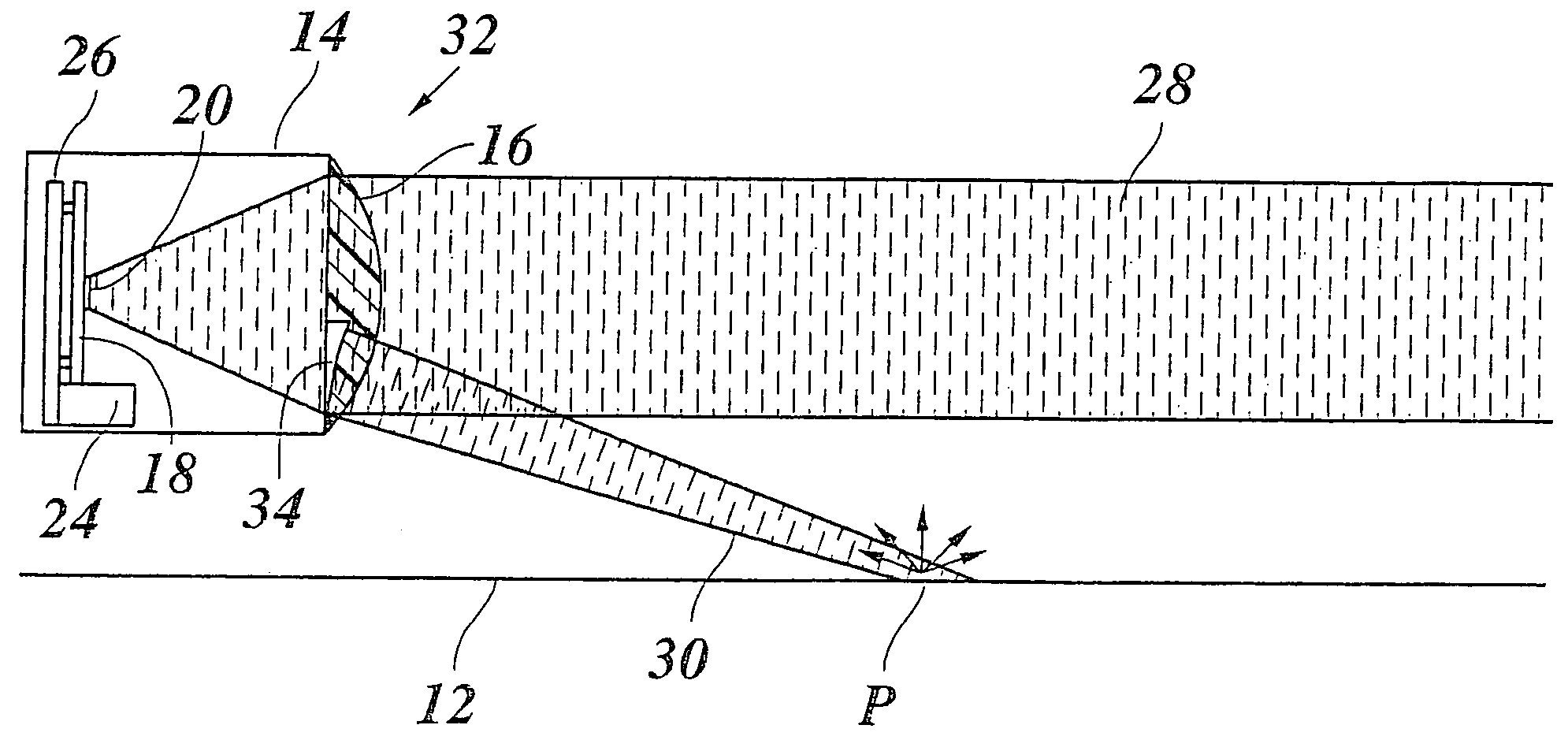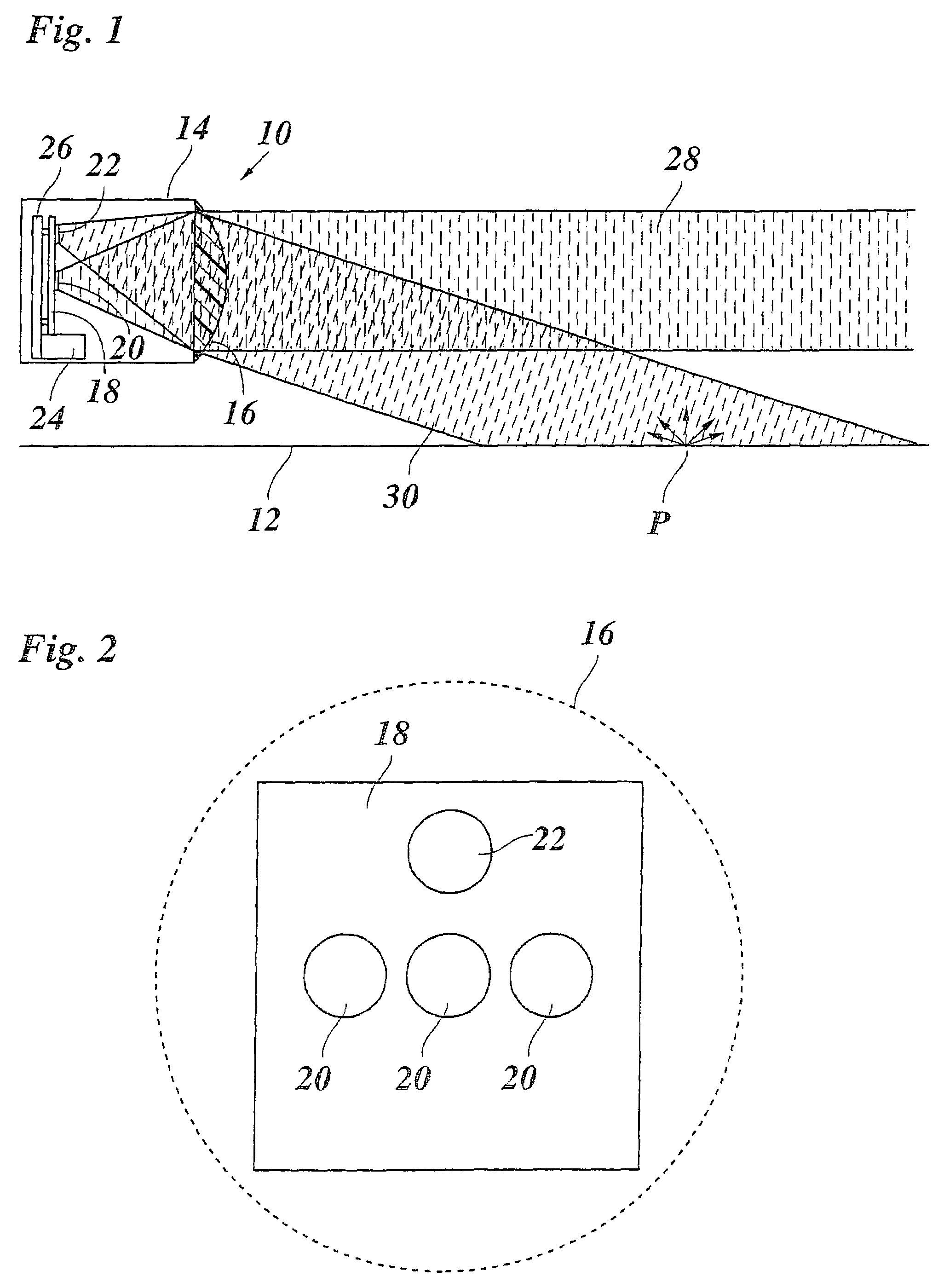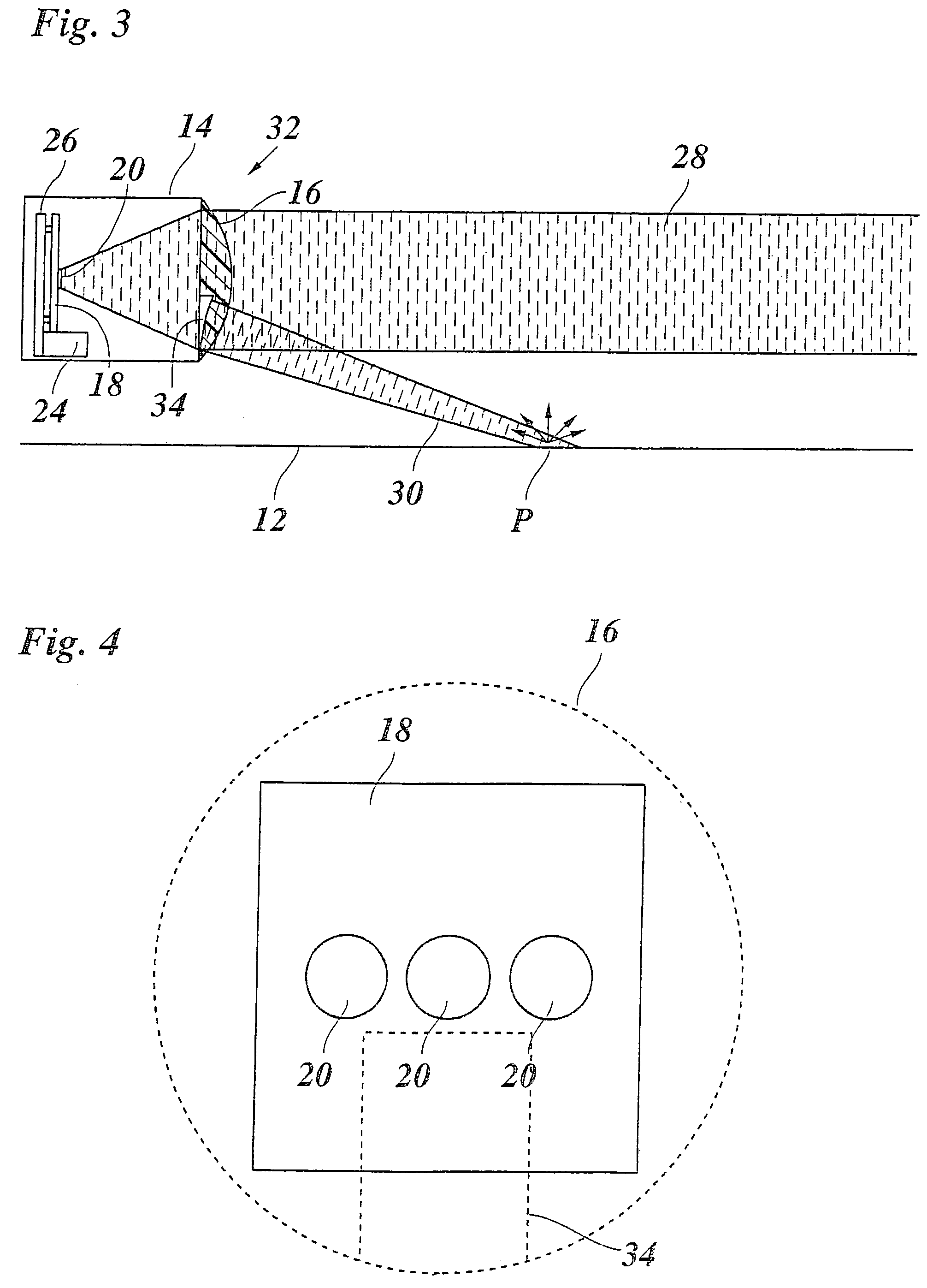Radar sensor for motor vehicles
a technology for a radar sensor and a motor vehicle, applied in the direction of antenna adaptation in movable bodies, instruments, antennas, etc., can solve the problems of inability to accurately determine, distorted speed measurement by wheel slip, and relatively weak echo, so as to simplify the targeted evaluation of this signal, improve the accuracy and reliability of the automatic blindness recognition system
- Summary
- Abstract
- Description
- Claims
- Application Information
AI Technical Summary
Benefits of technology
Problems solved by technology
Method used
Image
Examples
Embodiment Construction
[0026]Radar sensor 10 shown in FIG. 1 is installed on the front side of a motor vehicle, not shown, at a specified distance above roadway surface 12, and has a housing 14 which is closed off on the front side by a lens 16 (condenser element) made of a plastic that is transparent to radar waves. Multiple patches 20, 22, which are used as radar sources and fed by a microwave oscillator 24 via microwave conductors are mounted inside housing 14, on a substrate 18 approximately in the focal plane of lens 16.
[0027]In the example shown, patches 20, 22 are simultaneously used as receiving antennae for the radar echo. The received signals are evaluated by an electronic evaluation system mounted on a plate 26 behind substrate 18.
[0028]The system of patches 20, 22 on substrate 18 is illustrated in FIG. 2. The outline of lens 16 is represented by a dashed line. Three patches 20 are situated next to one another on a line which runs horizontally, and thus parallel to roadway surface 12. The middl...
PUM
 Login to View More
Login to View More Abstract
Description
Claims
Application Information
 Login to View More
Login to View More - R&D
- Intellectual Property
- Life Sciences
- Materials
- Tech Scout
- Unparalleled Data Quality
- Higher Quality Content
- 60% Fewer Hallucinations
Browse by: Latest US Patents, China's latest patents, Technical Efficacy Thesaurus, Application Domain, Technology Topic, Popular Technical Reports.
© 2025 PatSnap. All rights reserved.Legal|Privacy policy|Modern Slavery Act Transparency Statement|Sitemap|About US| Contact US: help@patsnap.com



